Follow the journey through the flowers and plants in the Wakhan Corridor.
July is a colorful season in the Wakhan Corridor, making it an ideal time to visit. June is when you can see the most flowers in bloom. Fields of yellow rapeseed flowers cover the farms, resembling patches of sunshine.
During our road trip to the Wakhan Corridor, we made numerous stops to admire the flowers, plants, and majestic mountains surrounding us. Trees are rare in the high mountains due to the harsh environment, making it difficult for vegetation to thrive at 3,000 meters or more altitudes. Cow dung is commonly used as fuel in this area. Willow trees and tamarisks can be found along the bank of the Wakhan River.
Our driver, Ahmed, grew tired of our frequent stops on the second day, but he got used to it very soon. I learned that many of the plants and flowers in this guide are also found in the Tajik Pamir and thrive at altitudes above 3,000 meters. I was curious about which ones are used as medicinal plants by the Wakhis and Kyrgyz people.
Frank, the enthusiastic botanist, chased plant after plant with his eagle-like eyesight, spotting many along the journey. I experienced a different perspective of the Pamir through his eyes.
Best Time to Visit
July to September are the best time to visit the Wakhan Corridor.
The end of September marks the beginning of winter.
How to Get to the Wakhan Corridor?
Here is a comprehensive guide to the Wakhan Corridor. Getting an Afghan visa is complicated.
14 Day Itinerary to Wakhan Corridor, Afghanistan
Acantholimon in Eshkishem
Eshkishem functions as a main town in the Wakhan, access to food and simple daily essentials can be found here.

This prickly thrift (Acantholimon ) is at its high blooming season. It is an evergreen subshrub from the Plumbago family and looks like a cushion. They grow beyond 3,000 meters. We found it outside of Eshkishem at 2,700 meters altitude.
Sarhad-e-Borgil
Sarhad-e-Borgil, at 3,200 meters, is the last village in the Wakhan Corridor. This is a farming village, looking at the charming view of the yellow fields beneath the blue sky in the summertime. The soft morning sunray enveloped the lush green valley. Groups of students were on the way to school, their laughter woke me up.

The well-maintained unpaved road leads to the border with China. Less than a decade prior, locals used an unsafe pathway along the Wakhan River bank to reach the Little Pamir. It is often to encounter Wakhis migrating to the high lands with their herds. In July, the men would transport more flour, clothing, and other necessities to their camps.
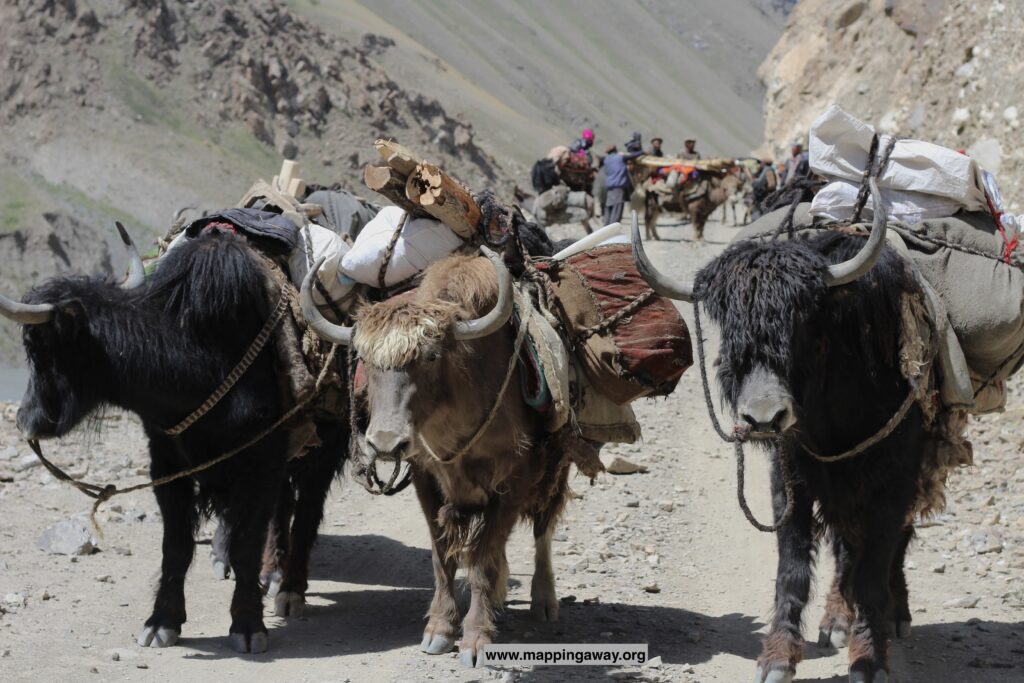
Wild Allium

Purple flowers are seen to dominate the deserted mountains. I would not know this was edible until Frank mentioned it. This wild Allium had a strong onion flavor when I bit it. One of our Wakhi hosts stirred it in oil and then mixed it with rice. It added the onion flavor to the rice.
Clematis Tanguticas

In the disappeared waterfall, waiting for melting snow, a group of Clematis Tanguticas look away from the hot sun. It grows at altitudes above 3,000 meters. This species is sometimes considered a subspecies of the Chinese or orange peel Clematis orientalis, which is an ornamental plant in the U.S. but has become an obnoxious weed in some states of the Midwest. Beware: Clematis are generally toxic when ingested and can irritate the skin.
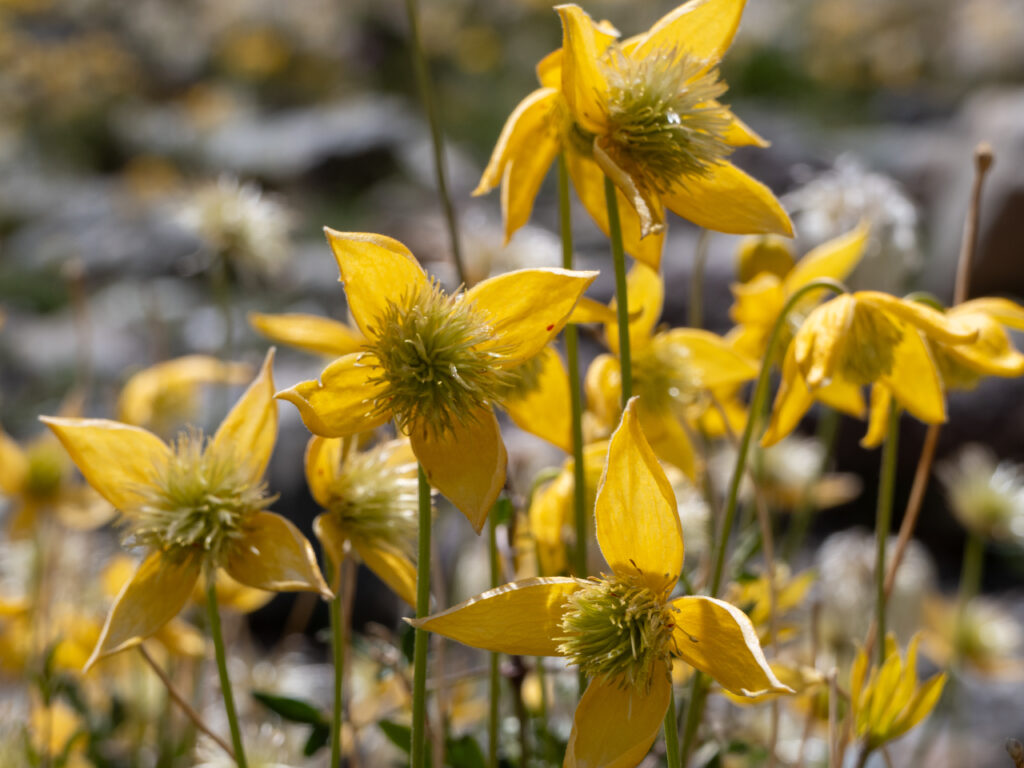
Arnebia
The melted ice water slowly winds through rocks in the low basin. This Arnebia of the borage family stood out with its bright yellow flower.

Pygmy Gentian
Pygmy Gentiana Prostrata (not higher than 7 cm) thrives in gravel soil.
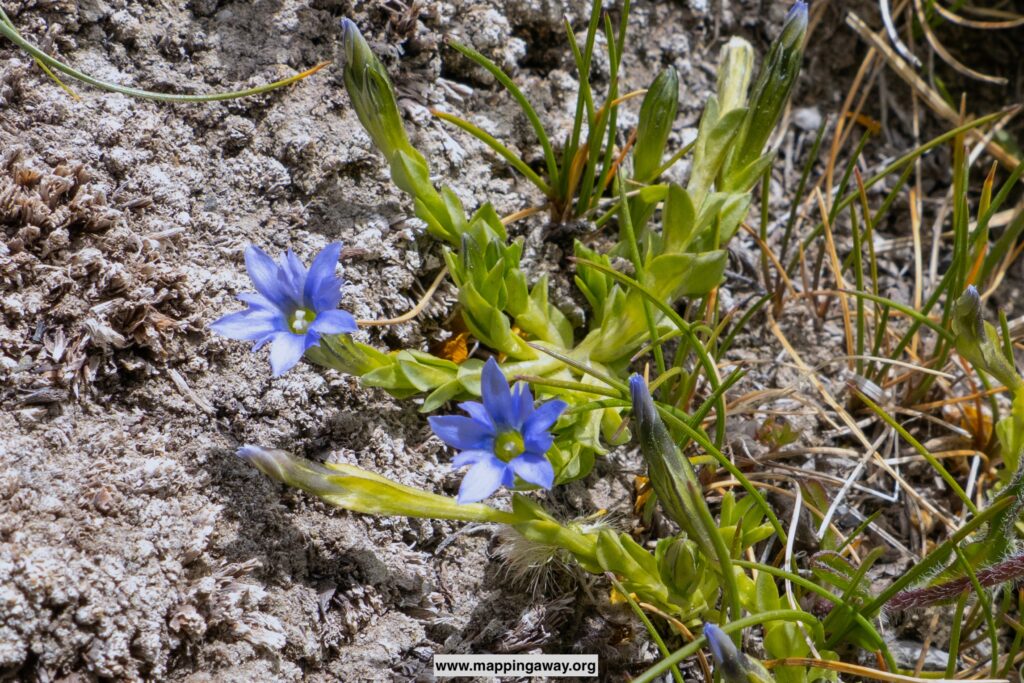
Buzi Gombaz
Buzi Gombaz is where the first Kygrz village we stopped. The wealthy Kygrz man owns herds, roaming in a large group on the low hill, and dozens of double hump camels. While the family unpacks their belongings, the camels freely gaze at the fresh grass. The tiny yellow spotted the grassland.

Ranunculus
These bright yellow buttercups grew on the stream bank near Buzi Gumbaz.
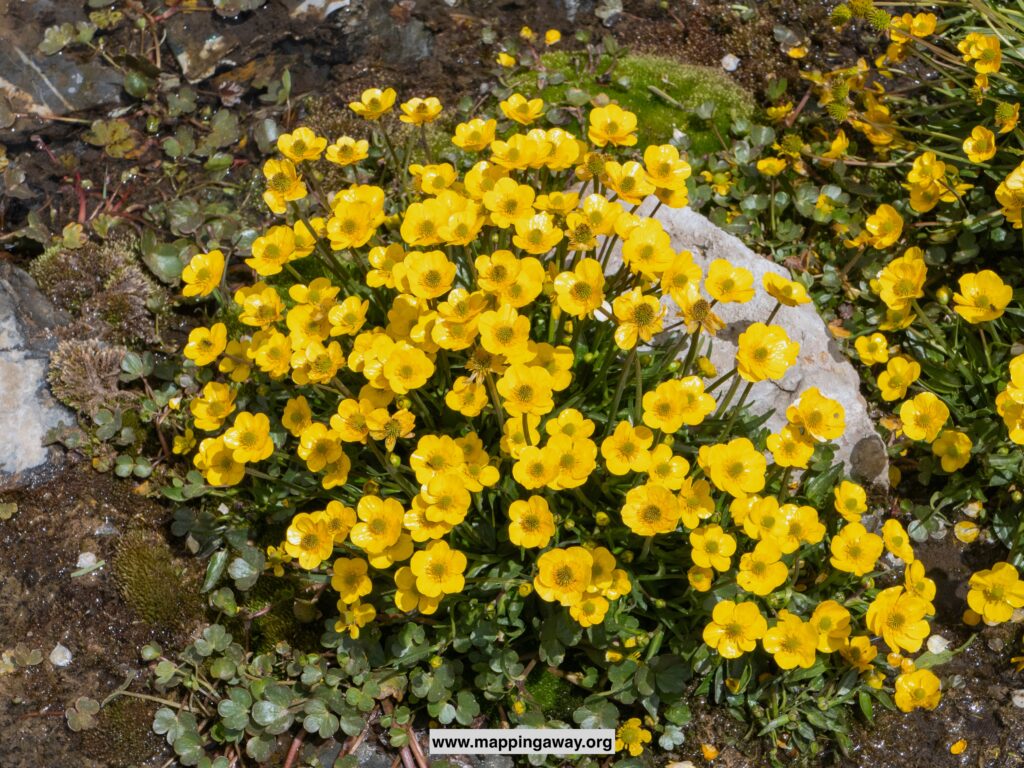
Chaqmaqtin Lake
Chaqmaqtin Lake became our final destination for the first day after Sarhad. The plan to stay at Buzi Gombaz did not work out, as the Kygrz families were in the middle of setting up tents.
Primula Pamirica

Across from the overpowering Pamir ranges, fields of purple Primula Pamirica look at the sun, shooting out. Meanwhile, I forgot about how harsh the Pamir is. The snow-capped mountains contrast with the lush green valley, I wondered if this is where ‘Roof of the World’ is referring to? Chaqmaqtin Lake, at 4,024 meters elevation, is where some Kygrz villages are built on the lake bank.
Uech Jalgha is a Kygrz village, offering accommodation to any outsiders. We spent a night in here. You can camp around the lake, but bring mosquito repellent spray. Summer is the breeding ground for mosquitoes. There is another village, about an hour’s walk from Uech Jalgha. This girl was excited to show us her yaks and the surroundings.

Swertia
In wet places, you can find this Swertia from the gentian family. This genus has many medicinal uses, such as the famous Swertia chirata from the Himalaya.
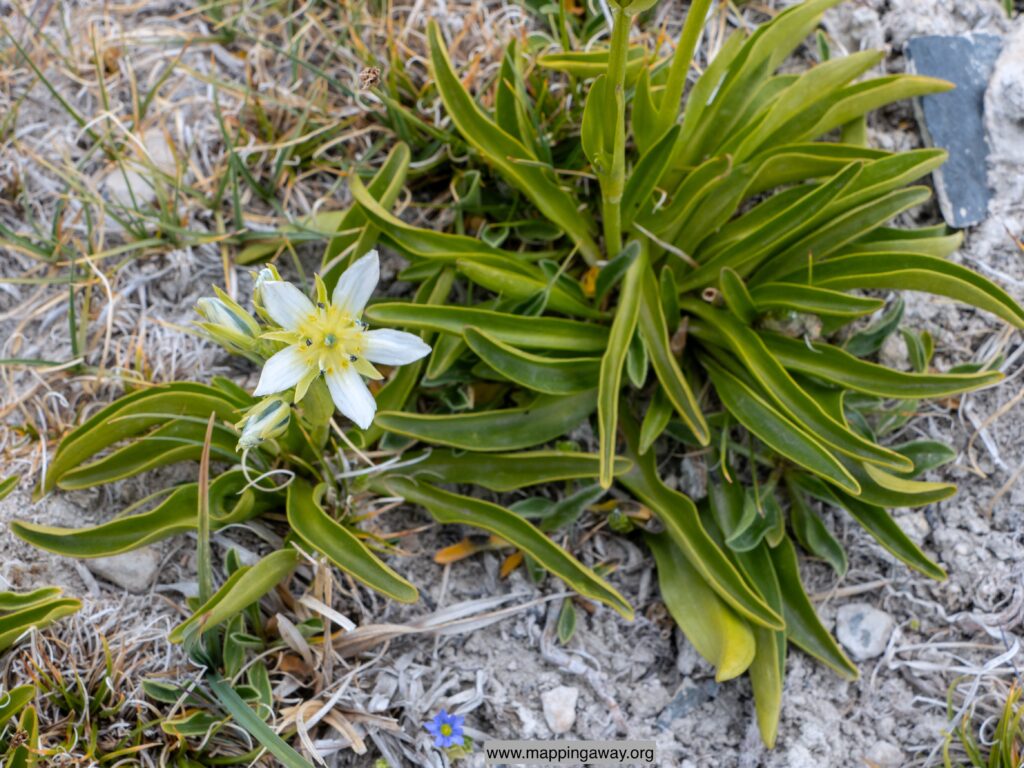
Kurchin Village

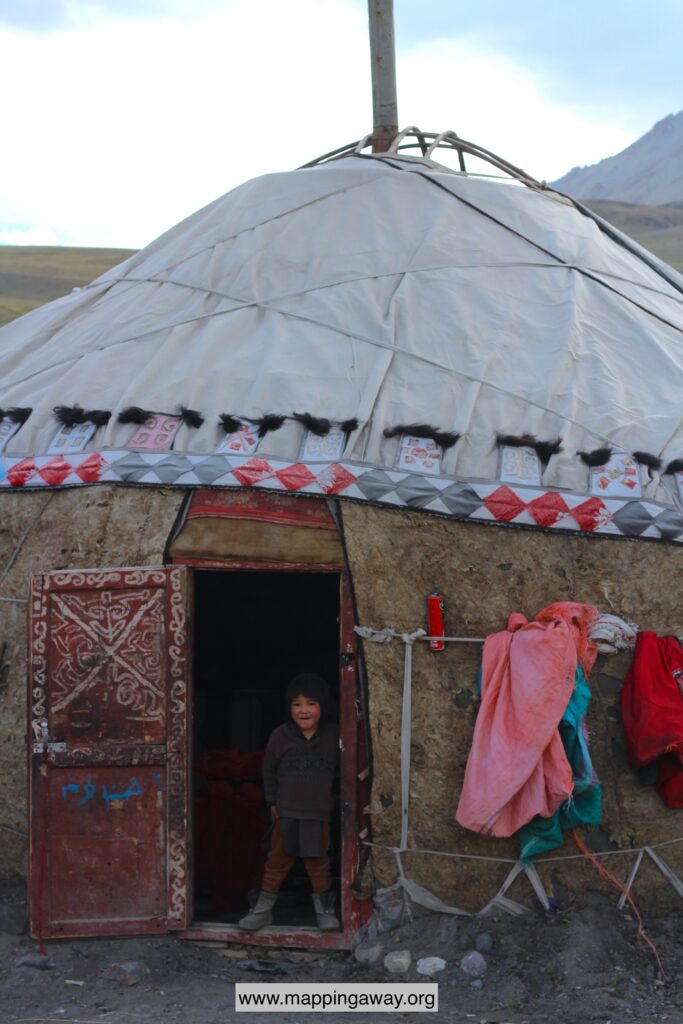
Kurchin village was where we spent a night, and the starting point for descending the Little Pamir. Aqbelis Pass is at 4,600 meters elevation. The weather is difficult to forecast in the summer. It was snowing in the morning. Despite the snow, women continued the milking chore. By 7 AM, they were working in the farm and separating the calves from the mother.
Saxifrage Hirculus at Aqbelis Pass

At 4,600 meters, a marsh Saxifrage Hirculus flourishes, nourished by the melted snow. If I go to Wakhan again, I’d make tea near a flower meadow. As we left Kurchin, we encountered several flower meadows on the way. I tried to avoid stepping on the tiny, colorful plants.

Pentaphylloides Dryadanthoidis
These beautiful scree climbers come with the not-so-elegant name Pentaphylloides Dryadanthoidis.
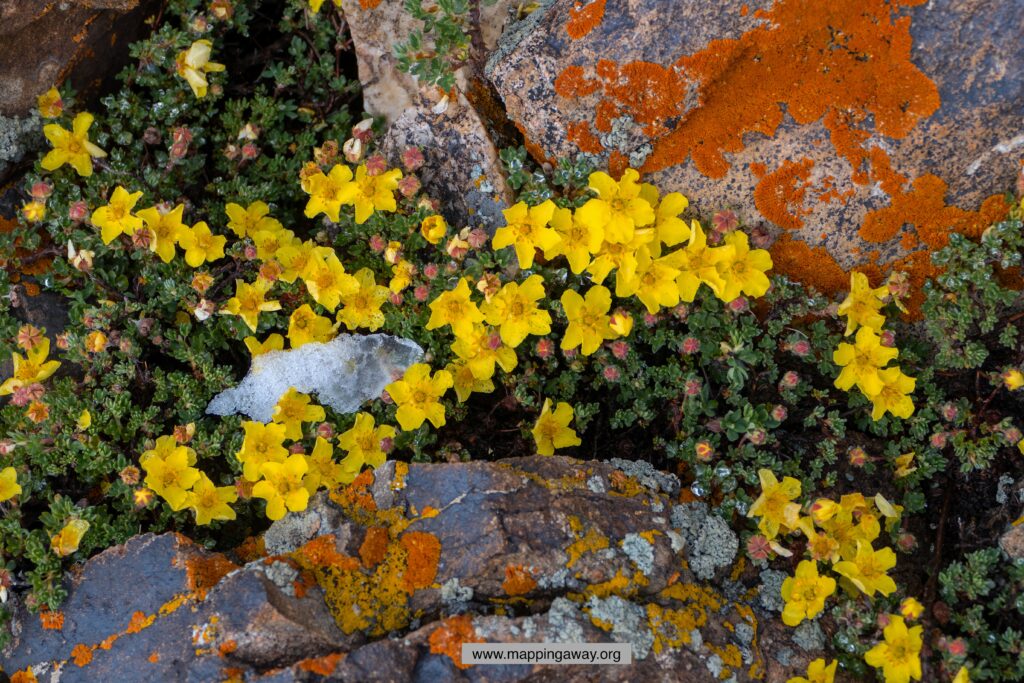
Lycaenidae Butterfly
This vibrant blue captivated me; it stands out on its own.

Uween Sar Pass
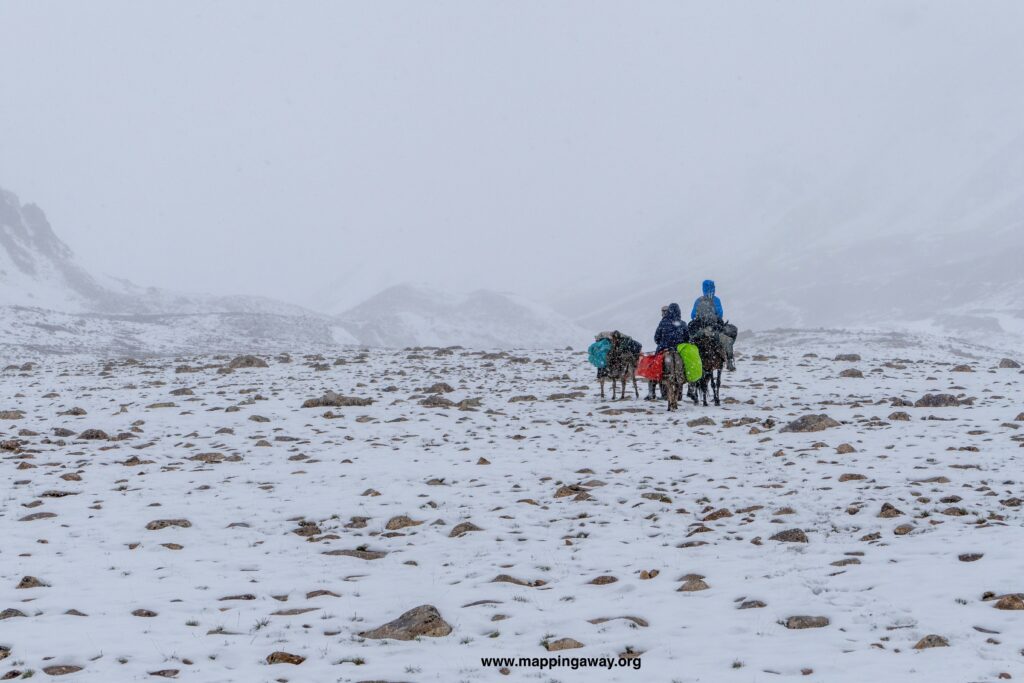
At 4,850 meters elevation, Uween Sar Pass is the most challenging pass in this hiking trip due to an unforeseen snowstorm. When the snow stopped, we quickly packed our bags. Part of the trail is covered in loose and fragmented rocks. It was a challenge to identify the trail. It seems like the snow and wind have not impacted on this flower. The flowers continue to bloom.
At the Foothill of Uween Sar Pass

At the foothill of Uween Sar Pass, the stream appears narrow with a slow current; crossing it was a challenge. We had to remove our shoes, walk on the slippery rocks, and soak in the ice-cold water for a few minutes. After we crossed, it took a few minutes for our feet to recover.
This white flower plant grew in the scree, and belongs to the Brassica family.

Rhodiola Coccinea
This cushion-formed succulent is known for thriving in a challenging environment. The red flowers attracted Frank’s attention. Not many red flowers were found during our hike.

This white flower plant, most likely Parrya or Chorispora in the cabbage family. It does not seem edible, Frank did not mention it. The flowers look fragile, but after snow, then hailstorm, they still bloom.

Primula Macrophylla
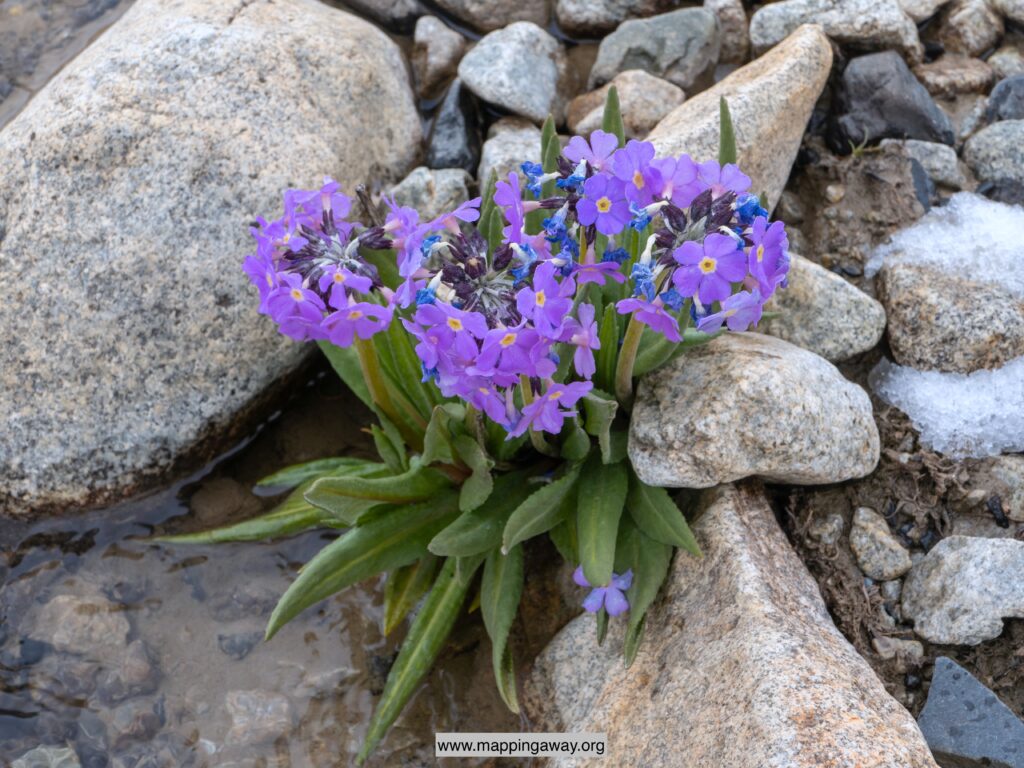
I’d had mistaken this as the Pamirica we saw in Chaqmaqtin Lake. It’s charming standing alone on the scree slope, drinking water from the melted snow, and bathing in the morning light after the snowstorm.
Nauabd Village

Nauabd village is on a hill slope, where access to the water streams. Fresh meadows for the animals. Arrived at Nauabad nearly 4 PM and it was raining. Woke up to a blessed sunny day, we got a clear view of the mountain ranges and the flowers.
After spending a night in Nauabad, we slowly descended to Sarhad-e-Borgil village. The long trek on a sunny day was opposite from the snowy day in Uween Sar Pass.
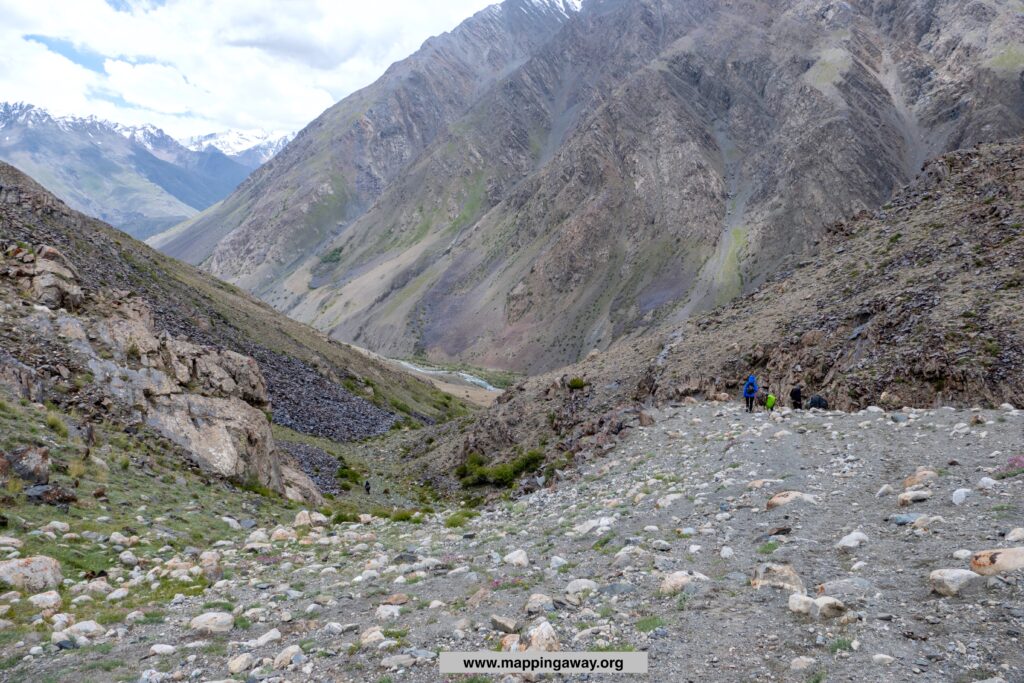
This path took us along a narrow route between ranges, high enough to feel the narrowness of the river. An Ephedraceae found its happy spot in a sunny rock soil.


